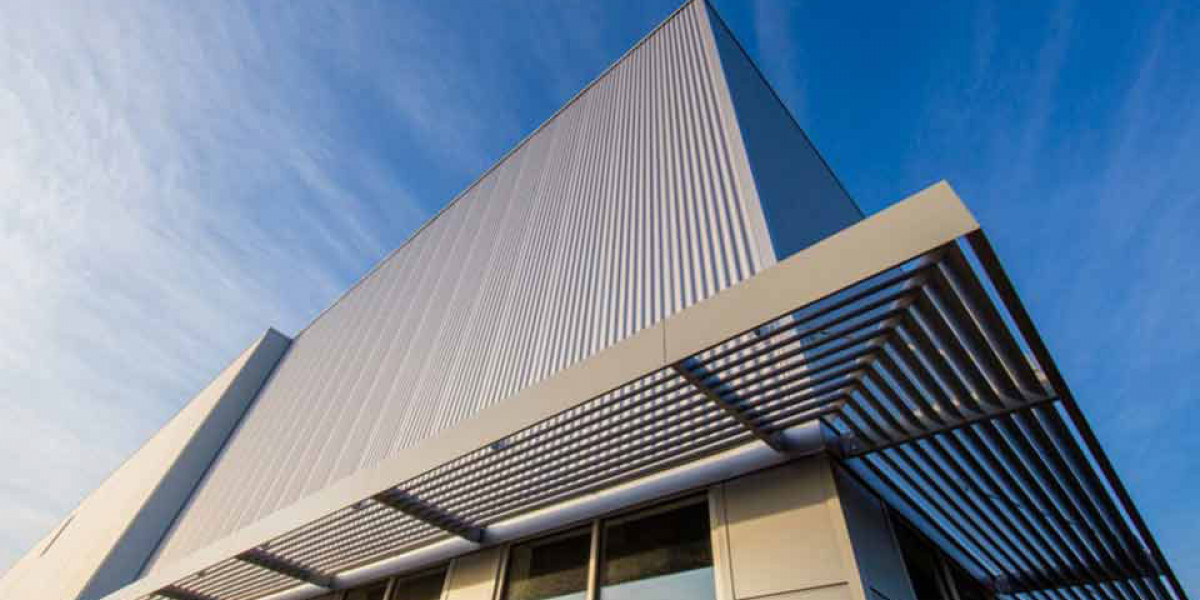In modern construction, metal wall panels have emerged as one of the most popular choices for both residential and commercial projects. Their combination of aesthetic appeal, long-lasting durability, and design flexibility makes them a preferred solution for architects, builders, and property owners. Whether you are aiming for a sleek, contemporary facade or a rugged industrial look, metal wall panels can deliver the perfect balance of style and performance.
What Are Metal Wall Panels?
Metal wall panels are prefabricated panels made from metals such as aluminum, steel, zinc, or copper. They are designed to be installed on the exterior or interior of buildings as cladding, offering protection against environmental elements while enhancing visual appeal. These panels come in various shapes, sizes, and finishes, allowing for customized design solutions.
Types of Metal Wall Panels
Metal wall panels are not one-size-fits-all. There are different types, each with unique benefits:
- Single Skin Panels – These are simple sheets of metal, often ribbed or corrugated, used for both decorative and protective purposes.
- Insulated Metal Panels (IMPs) – These panels feature an insulating foam core between two metal sheets, offering superior thermal performance.
- Composite Panels – Made by combining metal with other materials such as polyethylene for improved rigidity and insulation.
- Perforated Metal Panels – Designed with decorative cutouts that also improve ventilation and light flow.
- Standing Seam Panels – Popular for both roofing and siding, featuring interlocking seams for weather resistance.
Advantages of Metal Wall Panels
Metal wall panels are a long-term investment due to their functional and aesthetic benefits:
1. Durability
Metal is naturally resistant to wear, corrosion (especially aluminum and zinc), and extreme weather conditions. With proper coating, panels can last 40–60 years.
2. Low Maintenance
Unlike wood or concrete, metal wall panels require minimal upkeep. Occasional cleaning and inspection are enough to maintain their appearance and functionality.
3. Design Flexibility
Available in different colors, textures, and finishes, metal wall panels allow for creative freedom in architectural design.
4. Energy Efficiency
Insulated metal panels help reduce energy costs by keeping interiors cooler in summer and warmer in winter.
5. Sustainability
Most metal panels are 100% recyclable, making them an eco-friendly building material.
Applications of Metal Wall Panels
Metal wall panels are incredibly versatile and can be used in:
- Commercial Buildings – Office towers, shopping malls, and industrial facilities benefit from their modern appeal and resilience.
- Residential Homes – Increasingly popular in contemporary home designs for both exteriors and interiors.
- Institutional Buildings – Schools, hospitals, and government facilities use metal panels for their low maintenance and safety features.
- Architectural Features – Accent walls, decorative facades, and interior design applications.
Installation of Metal Wall Panels
While metal wall panels are relatively easy to install compared to traditional masonry, proper installation is crucial for longevity and performance.
- Surface Preparation – Ensure the substrate is clean, level, and structurally sound.
- Panel Alignment – Precise measurement and alignment prevent installation errors.
- Fastening – Panels can be fastened using concealed or exposed systems depending on the design.
- Sealing – Proper sealing prevents water infiltration and improves thermal performance.
- Finishing Touches – Trims and flashings complete the installation for a polished look.
Common Mistakes to Avoid
- Incorrect Measurements – Can lead to gaps, overlaps, or poor alignment.
- Using the Wrong Fasteners – May cause corrosion or weak attachment.
- Skipping the Underlayment – Reduces insulation and moisture protection.
- Neglecting Thermal Expansion – Metal expands and contracts with temperature changes, so allowance for movement is necessary.
Maintenance Tips
Although metal wall panels are low maintenance, following these tips ensures their long-term beauty and performance:
- Wash panels annually to remove dirt and debris.
- Inspect for loose fasteners and sealant wear.
- Touch up scratches to prevent corrosion.
- Check for signs of water infiltration after storms.
Conclusion
Metal wall panels are an ideal blend of durability, beauty, and versatility. Whether you’re designing a cutting-edge commercial building or giving a home a modern facelift, these panels offer an array of options to suit your vision. With proper installation and minimal maintenance, they can protect and enhance your property for decades.








